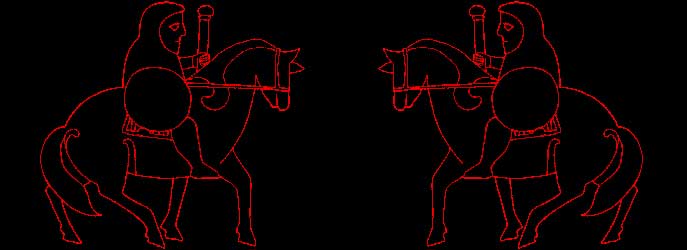APPENDIX IV, THE BRUDE KINGS |
|||
|
It has been suggested by some linguists that the prefix ‘Ur’ may be similar to the Welsh ‘Guor’, meaning ‘high’ or ‘over’, and the Gaelic prefix ‘Fior’ meaning ‘true,’ ‘pure’ or ‘noble.’ Other linguists have suggested that Ur may be a Pictish form of the Celtic ‘Ua’, meaning ‘descendant’ or ‘son’. Others yet that ‘Brude’ may not be a personal name so much as a title, like Lord or Sir. Brude Ur Leo, for example, may mean ‘Leo, the Lord High’.
If we take into account the realistic probability that the southern Picts spoke a form of P-Celtic similar to Old Welsh (while not forgetting the other learned arguments that have been put forward to the contrary), then it may be that these ‘Brudes’ are simply a ‘P’ form (hardened to a B) of the Irish and Gaelic word ‘Cruth’ or ‘Cruithne’, meaning ‘of the Picts’. The Irish text in the 14th century ‘Book of Ballymote’ says, “Bruide adberthea fri gach fir dib, randa na fear aile; ro gabsadar L. ar C. ut est illeabraibh na Cruithneach”. This translates as;
The implication is that everyone in Pictland was a ‘Brude’ and indeed this, or something similar, may have been what the Picts originally called themselves. As for those other kings called Brude in the main King List, like Brude the son of Bile (48), and Brude the son of Uurguist (59), they may simply have been named Brude in the same way that many Scots of today are called ‘Scott’. The list of 28 Brudes might have been Pictish Kings after all. |
REX PICTORUM |
Back to Top
Return to Paisley T. A. website
© Ron Henderson 2008-09

